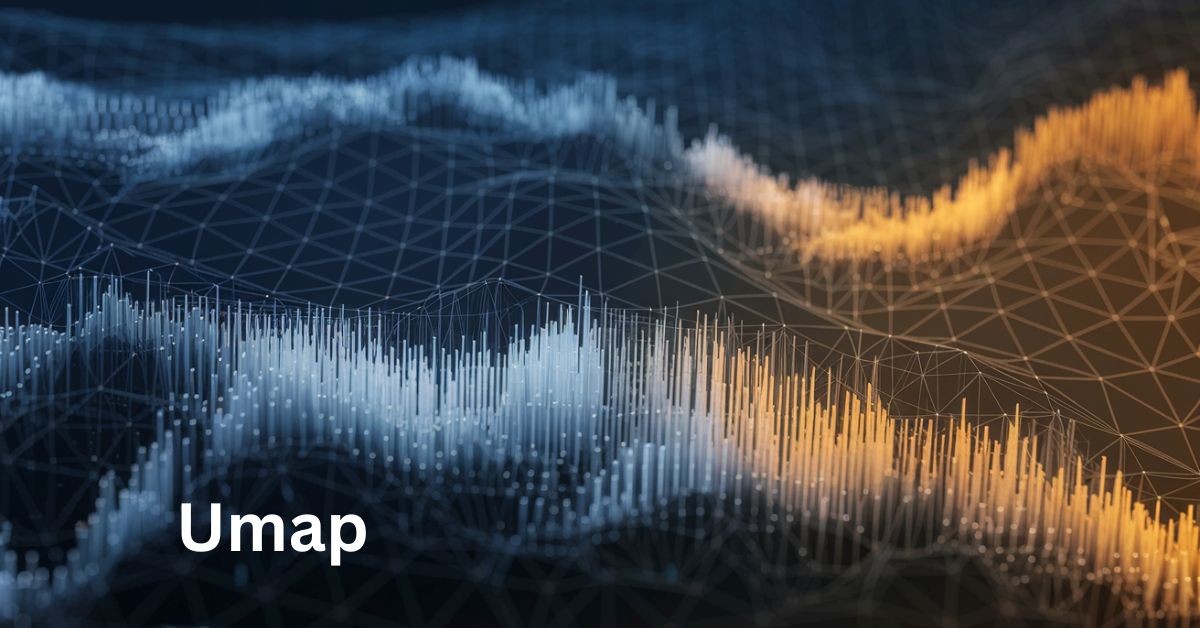Umap – The Ultimate Guide For Data Analysis!
UMAP for my data analysis project completely transformed the way I visualized complex datasets. The ability to reduce high-dimensional data into simple, interpretable 2D plots helped me uncover hidden patterns with ease.
UMAP (Uniform Manifold Approximation and Projection) is a powerful dimensionality reduction tool used to visualize high-dimensional data in 2D or 3D space. It’s widely used for tasks like analyzing transcriptomic data, uncovering patterns in gene expression, and classifying cells.
Stay tuned with us as we dive deeper into UMAP (Uniform Manifold Approximation and Projection) and explore how this powerful dimensionality reduction technique is revolutionizing data analysis and visualization!
What Is Umap?
UMAP (Uniform Manifold Approximation and Projection) is a technique used for reducing the number of dimensions in large datasets while retaining important information. It helps visualize complex data by simplifying it into 2D or 3D plots.
UMAP is particularly useful when working with high-dimensional data, such as in machine learning, biology, or genomics. It preserves both local and global data structures, making it a powerful tool for data exploration.
What Types Of Data Can Be Analyzed Using Umap?
Below are the key types of data that can be effectively analyzed using UMAP:
Tabular Data
This type of data might include numerical features, categorical variables, or a mix of both. Examples include:
- Customer data: Demographic information, purchase history, or behavior patterns.
- Financial data: Stock prices, economic indicators, or transaction records.
- Healthcare data: Patient records, medical history, or treatment outcomes.
Image Data
- Example: UMAP can help visualize similarities between images in a dataset (e.g., identifying similar faces in a large collection of photos) or perform clustering of images based on visual features.
- Application: Image search engines, computer vision tasks, and pattern recognition in medical imaging.
Text Data
- Example: UMAP can be applied to visualize word relationships (e.g., grouping synonyms) or cluster similar documents (e.g., news articles or academic papers).
- Application: Text classification, sentiment analysis, topic modeling, and document clustering.
Transcriptomic Data
- Example: In single-cell RNA sequencing, UMAP is used to reduce the dimensionality of gene expression data, revealing distinct cell types or gene co-expression patterns.
- Application: Understanding gene function, discovering biomarkers, studying cellular heterogeneity, and exploring disease mechanisms.
Time-Series Data
- Example: UMAP can reduce the dimensionality of time-series data from IoT devices, stock market trends, or sensor measurements, making it easier to spot trends, patterns, or anomalies.
- Application: Predictive maintenance, financial forecasting, anomaly detection, and climate modeling.
Multivariate Data
- Example: UMAP can be applied to environmental data, like air quality or temperature readings from different sensors, to understand the relationships between multiple variables.
- Application: Environmental monitoring, social network analysis, and economic modeling.
How Does Umap Work?
UMAP works by converting high-dimensional data into a lower-dimensional space while maintaining the data’s structure. It first creates a graph of the data points based on their similarities, then tries to preserve these relationships in the reduced space.
The algorithm minimizes the differences between the original and lower-dimensional spaces using optimization techniques. Unlike methods like PCA, which rely on linear relationships, UMAP is capable of capturing non-linear structures.
What Are The Main Applications Of Umap In Data Science?
Below are the main applications of UMAP in data science:
Reduction Visualization
One of the primary uses of UMAP is in dimensionality reduction, particularly when dealing with high-dimensional data. In many cases, datasets contain hundreds or thousands of features, making them difficult to visualize and analyze.
Clustering Pattern Recognition
UMAP is commonly used to uncover clusters and patterns within large datasets. By transforming high-dimensional data into a lower-dimensional space, it makes it easier to observe natural groupings or similarities between data points.
Feature Engineering
UMAP can be used for feature extraction and preprocessing before applying other algorithms. By reducing the dimensionality of a dataset, UMAP helps remove noise and irrelevant features, which can improve the performance of machine learning models.
Genomics Transcriptomics
UMAP is widely applied in genomics and transcriptomics to analyze and visualize complex biological data. In transcriptomics, UMAP is used to reduce the dimensionality of gene expression data, enabling scientists to compare the expression levels.
Natural Language Processing
UMAP is increasingly being used in NLP for tasks like word embeddings and document clustering. In NLP, textual data can be high-dimensional, especially when transforming words or documents into numerical vectors.
Anomaly Detection
UMAP can be used to detect anomalies in datasets by visualizing how data points deviate from expected patterns. In an anomaly detection task, such as fraud detection or network security, UMAP helps transform the data into a lower-dimensional space.
How Is Umap Different From T-Sne In Data Visualization?
UMAP and t-SNE are both used for visualizing high-dimensional data in lower dimensions, but they differ in how they handle data and performance. t-SNE focuses on preserving local structure by grouping similar points together.
UMAP, on the other hand, can handle large datasets efficiently and retains both local and global data structures. UMAP also performs faster than t-SNE, which can be slow on large datasets. While t-SNE is great for small datasets and fine-grained clustering.
How Can Umap Be Used To Visualize Transcriptomic Data?
UMAP can be used to visualize transcriptomic data by reducing the complexity of gene expression profiles. In transcriptomics, cells have gene expressions that can vary greatly, with each gene representing a high-dimensional data point.
By applying UMAP, these data points are transformed into a 2D or 3D plot where similar cells group together based on their gene expression. This helps scientists identify patterns, such as which genes are expressed similarly across different cells.
FAQs:
Can Umap Be Used For Clustering Data?
Yes, UMAP can be used to reduce dimensionality and visualize clusters in data. It is commonly used in combination with clustering algorithms like k-means to group similar data points together.
How Does Umap Handle Large Datasets?
UMAP is highly efficient and scalable, capable of handling large datasets due to its optimization techniques. It can work with datasets with millions of data points while maintaining computational efficiency.
Does Umap Require Labeled Data?
No, UMAP is an unsupervised learning technique. It does not require labeled data to create embeddings, making it ideal for exploratory data analysis and visualization tasks.
Is Umap Suitable For Time-Series Data Analysis?
Yes, UMAP can be applied to time-series data by treating the temporal sequences as high-dimensional vectors. It can then reduce the dimensionality while preserving temporal patterns.
Conclusion:
UMAP (Uniform Manifold Approximation and Projection) is a powerful tool for dimensionality reduction that excels in preserving both local and global structures in high-dimensional data. Its efficiency, scalability, and ability to handle various types of data make it invaluable in fields like data visualization, machine learning, and bioinformatics.






